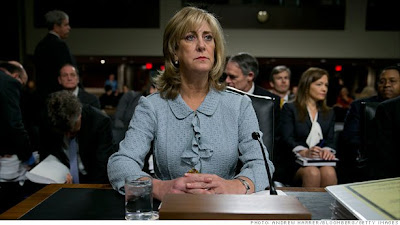The Next Step in Europe's Implosion
Rome wasn't built in a day and the Eurozone will not collapse in a day. But, the Eurozone will collapse. It's just a matter of time. Consider the stronger countries in the Eurozone -- Germany and France. Both economies are now contracting. Meanwhile their debt levels, acknowledged and unacknowledged, have exploded to new levels. Both countries are now in the situation that faced Greece four years ago. So, how is their future going to be any different that what is now taking place in Cyprus, Greece, Spain and Italy? The ECB ministers are a group of political hacks who know little or nothing about economics (something they share with the Obama advising team). Their idea of improving the economic plight of the Eurozone is to increase the level of debt, continue to implicitly guarantee profligate spending and bureaucratic regulations, and plunge the Eurozone into the economic dark ages. GDP is falling, debt is rising, unemployment is rising, and recriminations are flying.








